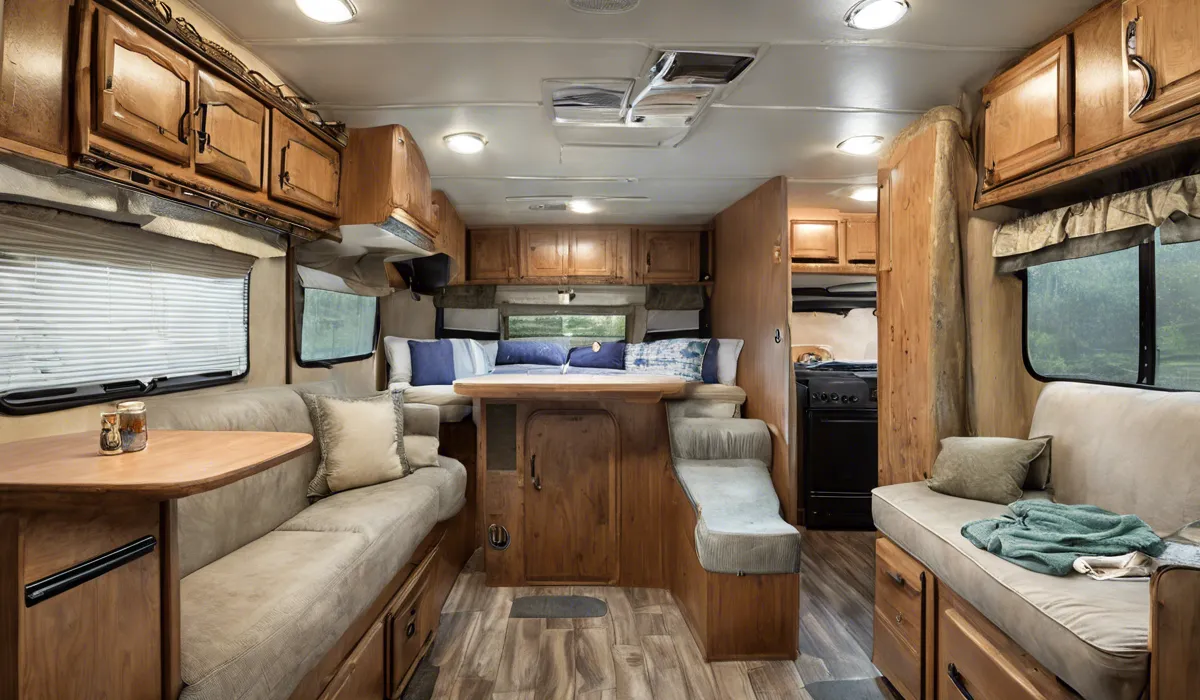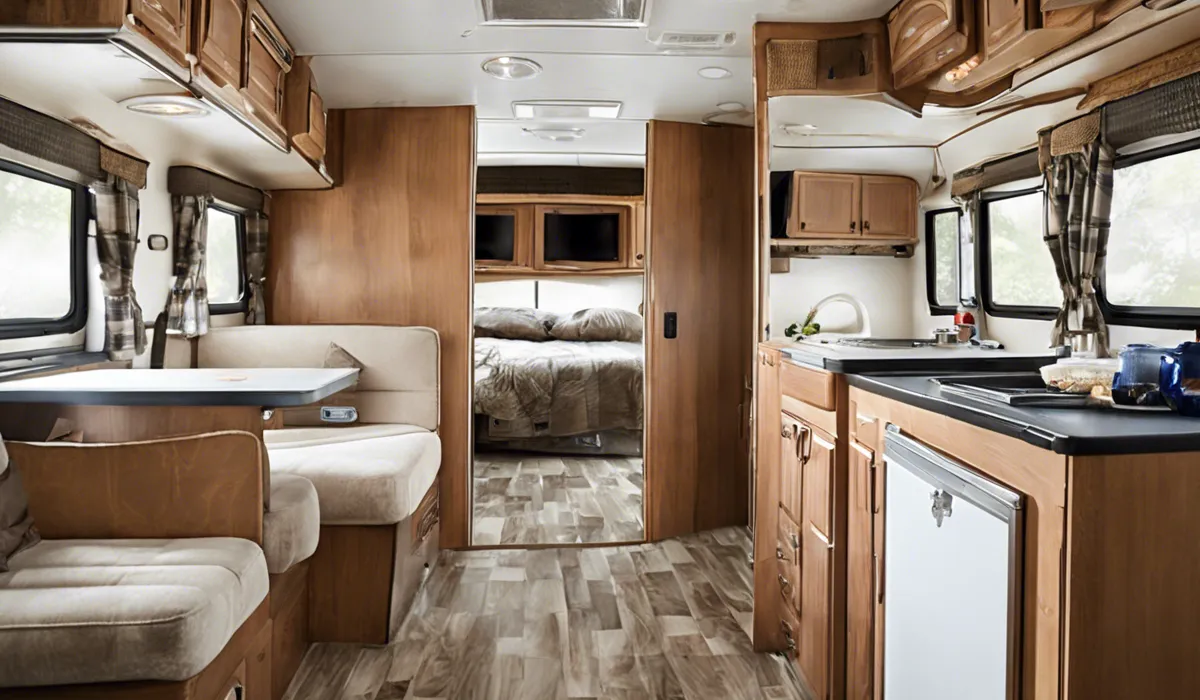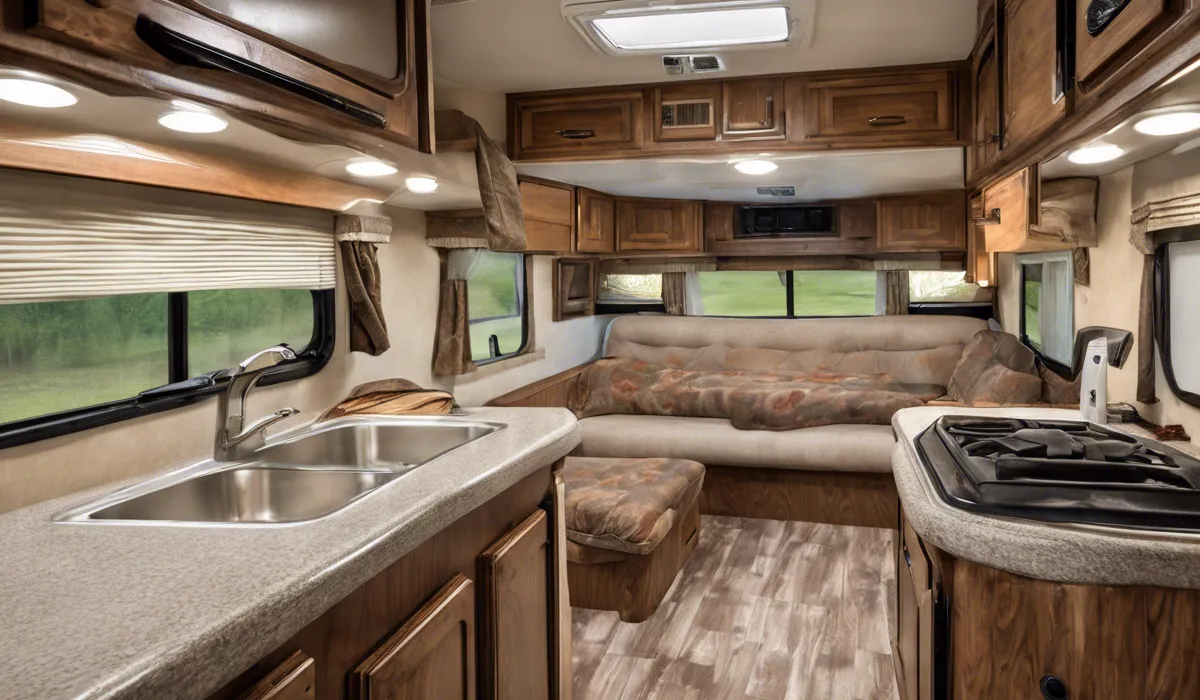To eliminate mold in a camper, first ventilate the space. Clean surfaces with a mixture of water and white vinegar, ensuring to dry thoroughly.
Address any leaks promptly, and maintain low humidity with a dehumidifier to prevent mold regrowth.
Identification and Assessment

Understanding Mold in Campers
Mold is a type of fungus that thrives in moist environments. In your camper, mold can grow due to condensation, leaks, or high humidity.
Campers are often closed up for long periods, creating the perfect home for mold. It’s important to understand that mold can cause damage to your camper’s interior and might also harm your health.
Common Mold Types in Campers
Several types of mold might grow in your camper. Black mold, or Stachybotrys, is one of the most talked about due to its toxicity.
Other common types include Aspergillus, Cladosporium, and Penicillium. Each type can appear differently, from black spots to white, powdery substances.
Health Risks of Mold
Exposure to mold can lead to health issues such as allergies, respiratory problems, and sometimes more severe conditions.
Symptoms may include coughing, sneezing, and itchy eyes. For those with asthma or weakened immune systems, the risks are even greater.
Locating Mold in Your Camper
To find mold, check common areas like corners, ceilings, around windows, and under mattresses.
Look for discoloration, musty odors, or any signs of water damage as these can indicate mold presence.
Tools for Mold Inspection
For a thorough inspection, you’ll need a flashlight, gloves, and a mask to protect yourself. A moisture meter can help identify wet areas that are prone to mold growth. Taking pictures can also be helpful for tracking progress.
Cleaning and Removal

Prepping for Mold Removal
Before starting, protect yourself with safety gear like gloves, goggles, and a mask. Seal off the area to prevent mold spores from spreading to other parts of the camper.
Natural vs. Chemical Cleaners
Natural cleaners like vinegar are safe and effective against mold. Chemical cleaners, such as bleach, are more powerful but can be harmful if not used correctly.
Consider the environment and your health when choosing your cleaning agent.
Cleaning Mold Step by Step
Begin by gently scrubbing the affected areas with a mixture of water and white vinegar. For tougher mold, you may need to use a brush.
After cleaning, dry the surfaces thoroughly to prevent mold from returning.
Tips for Complete Mold Removal
Ensure you reach every nook and cranny where mold might hide. After cleaning, let the area sit for a while and check again for signs of mold.
Repeat the cleaning process if necessary to ensure all mold is gone.
Knowing When to Call a Pro
If the infestation is large or if mold keeps coming back, it may be time to call a professional.
They have the tools and expertise to tackle severe mold problems safely and effectively.
Prevention and Maintenance

Improving Ventilation
Good airflow is key to preventing mold. Open windows and vents when possible to allow air to circulate.
Consider installing vent fans or using a dehumidifier to help reduce moisture in the air.
Controlling Camper Humidity
Maintain low humidity levels in your camper, ideally between 30% and 50%. Use a dehumidifier or moisture absorbers to keep the air dry, especially when the camper is closed up.
Regular Cleaning Routines
Regularly clean your camper, focusing on areas prone to moisture buildup. Wipe down surfaces, check for leaks, and promptly address any water damage you find.
Choosing Mold-Resistant Products
When repairing or upgrading your camper, select materials and products that resist mold growth. These might include mold-resistant paints, fabrics, and building materials.
Seasonal Camper Care
Before storing your camper, clean it thoroughly and ensure it’s dry. Perform regular checks even when it’s not in use to catch any signs of mold early on.
FAQs About Getting Rid of Mold in a Camper
How do I start the process of removing mold from my camper?
To begin removing mold from your camper, start by ventilating the area well to reduce moisture and clear out mold spores.
What cleaning solution is effective against camper mold?
A mixture of water and white vinegar is effective for cleaning surfaces in your camper that are affected by mold. Ensure that you dry the surfaces thoroughly after cleaning.
After cleaning, how can I prevent mold from coming back in my camper?
To prevent mold regrowth, address any leaks promptly and maintain a low humidity environment with the use of a dehumidifier.
Is it important to dry surfaces after cleaning mold in a camper?
Yes, it is crucial to dry all surfaces thoroughly after cleaning to prevent mold from re-establishing due to moisture.
What should I do if I find a leak in my camper that may cause mold?
If you discover a leak in your camper, repair it promptly to prevent ongoing moisture issues that can lead to mold growth.
Final Thoughts
To effectively combat mold in a camper, ensure proper ventilation before tackling the issue. Clean affected surfaces with a water and white vinegar solution and thoroughly dry the area.
Addressing leaks without delay and using a dehumidifier to maintain a dry environment are critical steps to prevent future mold growth.
